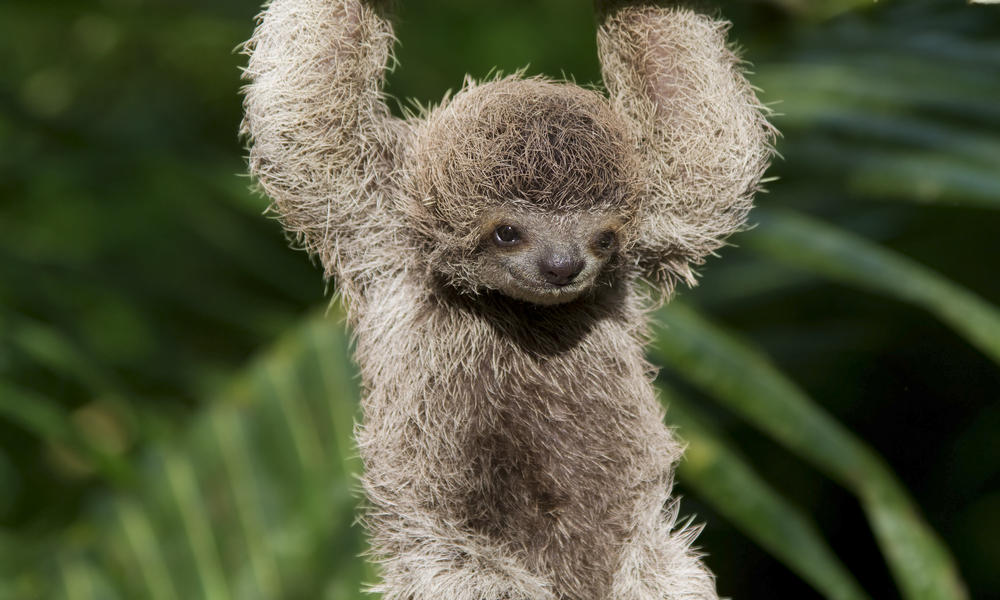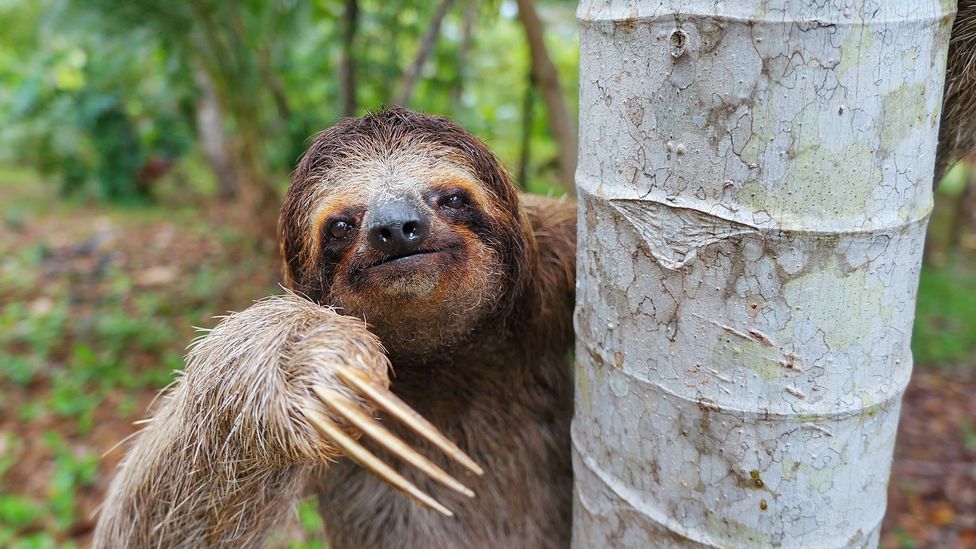Move So Slow
Oct. 20 is International Sloth Day. Impress your friends (and ace your next Buzzfeed quiz) with these fun facts about sloths.

Every time I take him outside he walks so slow that other people comment and ask how old he is. I know he loves to play with dogs but he has been a little aggressive with dogs lately so I’ve avoided going to the dog pack because of that. The few times I have gone is the only time I’ve seen him move somewhat faster. Wondering what else I can do.
- Synonyms & Antonyms of slow (Entry 1 of 3) 1 moving or proceeding at less than the normal, desirable, or required speed because of the holiday, traffic to the beach was particularly slow.
- Time Moves Slow Lyrics: I found you at the window again / Looking out, watching the leaves falling in / And it was something like a dream / Wow, so perfect, couldn't talk to me / Time moves slow.
What is a sloth?
Sloths are the stars of memes and viral videos. They make us laugh, and they make celebrities cry. But these social media darlings have been around far longer than the internet. Millions of years ago, giant ground sloths the size of elephants roamed the planet. Some were nearly 20 feet long from snout to tail, with massive claws for pulling tree branches down to eat.
Today’s sloths are a little less intimidating. They max out at about 2.5 feet and weigh between 9 and 17 pounds (about the size of a small dog). They have coarse, brown fur, long limbs and curved claws for hanging tightly onto tree branches — the adaptation to upside-down tree living. And they’re one of the slowest-moving animals on earth!
There are two living families of sloths: two-toed sloths and three-toed sloths. Truth be told, all sloths have three toes on their back feet. But two-toed sloths only have two toes on their front feet, whereas three-toed sloths (you guessed it) have three. Two-toed sloths are also slightly bigger than their three-toed pals.
So, are sloths marsupials or primates?
Trick question. Sloths are mammals, but they aren’t primates or marsupials – though the groups do share some similarities. Koalas, for example, are marsupials that live in trees, eat leaves and have slow metabolisms. But sloths and koalas developed these traits independently of each other. The two aren’t closely related. Sloths actually belong to the superorder Xenarthra and the order Pilosa, with a family tree that includes anteaters and armadillos.
Where do sloths live?
Sloths are found throughout Central America and northern South America, including parts of Brazil and Peru. They live high in the trees of tropical rainforests, where they spend most of their time curled up or hanging upside down from branches. Sloths will sleep, eat, mate and even give birth upside down!
Why are sloths so slow?
Sloths have leafy, low-calorie diets and very slow metabolisms to match. Their metabolic rate is only about 40-45% of what would be typical for their body weight.
Because of this specialized metabolism, sloths need to be frugal with their energy use. So, they move slowly and tend not to wander far from their small home ranges.
Can sloths swim?
Believe it or not, sloths are strong swimmers. Despite their clunky movement on the ground, sloths are nimble in the water where they use a sort of doggy paddle to move around.
Are sloths endangered?
The smallest sloth, called the pygmy three-toed sloth, is found only on a small island off the coast of Panama where it is critically endangered. Some species, like the maned three-toed sloth are considered vulnerable. Others, like the southern two-toed sloth (also called the Linne’s or Linnaeus’ two-toed sloth) are designated as least concern by the International Union for Conservation of Nature.
Are they dangerous?
You tell us:
In all seriousness, you’re unlikely to cross paths with a sloth in the wild (they rarely leave their treetop hideouts). But if you do, like any wild animal, it’s best to keep your distance.
Sloths typically rely on their camouflage to protect themselves from predators. However, when threatened, they can use their 3- to 4-inch-long claws and teeth to defend themselves. And despite their slow movements, sloths are surprisingly strong.
And there are other reasons not to snuggle up to a sloth. Each strand of a sloth’s coarse fur has grooves that run from top to bottom where two types of blue-green algae grow. The green tint of the algae helps sloths blend in to their leafy surroundings, but it also invites ticks, mites, beetles, moths and other creepy crawlies to the party. This little ecosystem created by the algae is so unique that some species, like the sloth moth, live exclusively on sloth fur!
So, do sloths have predators?
Jaguars and eagles are common predators of sloths.
Do sloths have tails?
They’re not much to look at, but three-toed sloths do have short, stubby tails.
What do sloths eat?
Sloths eat leaves, fruit and some select fresh green shoots (they’re not keen on crunchy twigs). Though mostly herbivorous, they may occasionally snack on a larval insect or other passive, protein-packed snack (like a bird egg). They lap dew drops off of leaves and fruits, and get additional water from their food.
Did you know that a sloth’s teeth grow continuously throughout its life? As sloths chomp on plants, their teeth get worn down, which prevents them from getting too long.
It takes a long time for a sloth to digest its leafy diet. So long, in fact, that a sloth usually only climbs down from its tree about once a week to poop!
How much do sloths sleep?
True to their name, sloths sleep for about 15 hours a day. They’re mostly nocturnal, sleeping during the daytime and waking up at night to eat.
How can I help sloths?
Sloths live in rainforests, where habitat destruction is a serious threat. Supporting the responsible use of resources (like choosing Smithsonian Bird Friendly Coffee) can help protect them from habitat loss.
They’re also impacted by wildlife trafficking. Sloths may be amazing and adorable but, like other exotic animals, they don’t make good pets. Their unique diet, lifestyle and health needs require specialized care. Instead, get your fix by visiting sloths at the Smithsonian’s National Zoo or taking home a sloth plush through the Adopt a Species program.
A sloth is an arboreal mammal famous for its slow movement and spending most of its time sleeping while hanging upside down on a tree. There are six species of sloths, broadly divided into two families; three-toed and two-toed sloths. Although sloths have three toes on each of the rear limbs, it is the front limbs that cause the difference in the two families. These species are mainly found in the tropical rainforests of Central and South America. The animal is named so (sloth) because of the slow rate of metabolism and the deliberate slow movement. Sloths move faster in water than on land where they are almost helpless.
Physical Characteristics

Sloths vary in size and weight. An adult species can be as long as 24-31 inches and weigh 7.9-17 pounds. Two-toed species are slightly larger than the three-toed species. The limbs of sloth are longer and the heads are bigger with tiny ears. The tail is about 2.4 inches long. Sloths are unique mammals in that they do not have seven cervical vertebrae. Three-toed sloth has 8-9 while two-toed has 5-7 cervical vertebrae. Sloths have poor hearing and visual acuity. Thus, they mainly rely on the senses of touch and smell to locate their food. The hair of the sloth fur grows away from the extremities because they spend most of their time with their limbs above the body. Their shaggy coat host other species including parasitic arthropods and algae.
The Slow Movement
Evolution
Move Very Slowly
Sloths are considered the slowest mammals on earth. They do everything, including blinking, in slow motion with no need to rush. Sloths spend most of their time on trees, only coming to the ground if they want to move into the water or defecate. On average, a sloth can travel 40 yards in a day. The slow movement in sloths is attributed to their evolution and how they presently survive. The modern-day sloth is a smaller version of the sloths that lived in the prehistoric world. The ancient sloths were giants and weighed several tons. They walked on the ground and foraged from trees while standing up on their hind legs. However, after years of evolution, the sloths became smaller and could not reach the leaves while standing. They had to climb up a tree where they presently spend most of their time.
Diet
Movie So Close Cast
Both going up the tree and the diet that is entirely based on leaves have majorly contributed to the slow movement of sloths. Leaves are poor in nutrients and it also takes a lot of time for calories to be derived from them. Because of the two factors, sloths have a slow rate of metabolism to help them cope with the low caloric intake. To also ensure that they preserve energy, sloths move at a sluggish pace through the trees. To keep the body energized all the time, mammals need to eat a lot. However, sloths spend up to 15 hours sleeping and the remaining 9 hours lumbering through the trees. Sloths inhabit the tropical forests where the climate is hot and humid. Because the environment is already warm, sloths do not need to expend a lot of energy to keep their systems warm.

Move Very Slowly Synonym

Sloths are the slowest mammals on earth. They spend most of their time on trees sleeping and only come to the ground to defecate or move to the water. Their slow movement is associated with a slow rate of metabolism. Their diet of leaves is what is to blame for slow metabolism.